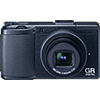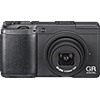Main
Model
Price
Advantages
launch
Announced
Body type
Camera subcategory
Sensor
Effective pixels
Max resolution
Sensor size
Sensor type
Processor
Image ratio w:h
Other resolutions
Sensor photo detectors
Image
ISO
White balance presets
Custom white balance
Image stabilization
Uncompressed format
JPEG quality levels
Photography features
Minimum shutter speed
Maximum shutter speed
Aperture priority
Shutter priority
Manual exposure mode
Subject / scene modes
Built-in flash
Flash range
External flash
Flash modes
Self-timer
Metering modes
Exposure compensation
Screen / viewfinder
Articulated LCD
Screen size
Screen dots
Touch screen
Live view
Viewfinder type
Videography features
Resolutions
Microphone
Optics & Focus
Focal length (equiv.)
Optical zoom
Maximum aperture
Autofocus
Digital zoom
Manual focus
Normal focus range
Macro focus range
Physical
Weight (inc. batteries)
Dimensions
Environmentally sealed
Battery
Storage
Storage types
Storage included
Connectivity
USB
HDMI
Remote control
Other features
Orientation sensor
Timelapse recording
GPS
Samples
Videos
Summary
The Ricoh GR Digital III has larger sensor compared to the Ricoh GR Digital II: 1/1.7' (7.44 x 5.58 mm) versus 1/1.75' (7.36 x 5.52 mm). This is the most important difference between these cameras as big sensor allows the photographer to take pictures of the better quality.
The Ricoh GR Digital III is equipped with tilting LCD that will allow the photographer to take amazing selfie photos. The Ricoh GR Digital III display is better as it has more number of screen dots 920,000 in comparison to 230,000 dots of the Ricoh GR Digital II screen. The higher dot count display is better for reviewing images on your camera. The Ricoh GR Digital II has better lowest (180 seconds) and maximum (1/2000 second) shutter speeds.
The GR Digital II weighs 200g which is 8g less than the weight of the Ricoh GR Digital III.
Considering the above-mentioned differences the Ricoh GR Digital III is the best buy. Check the lowest price on Amazon.


